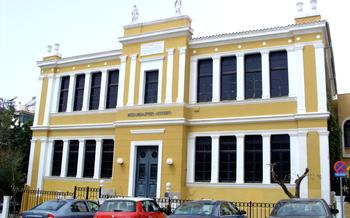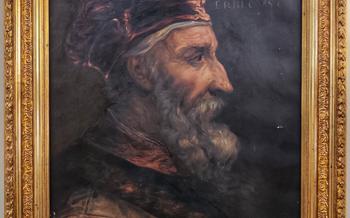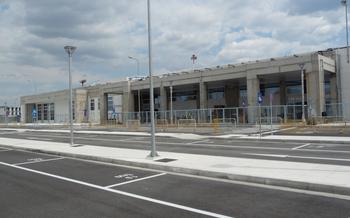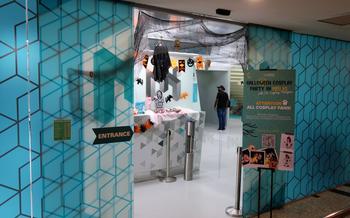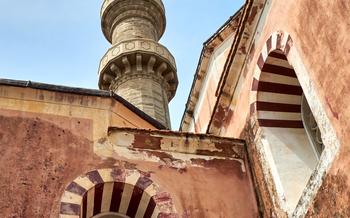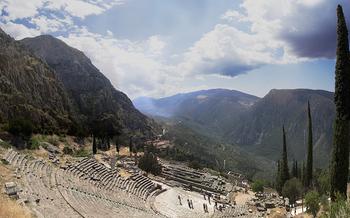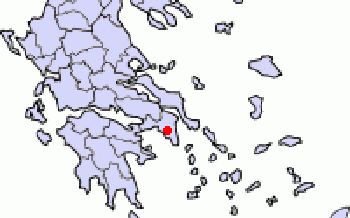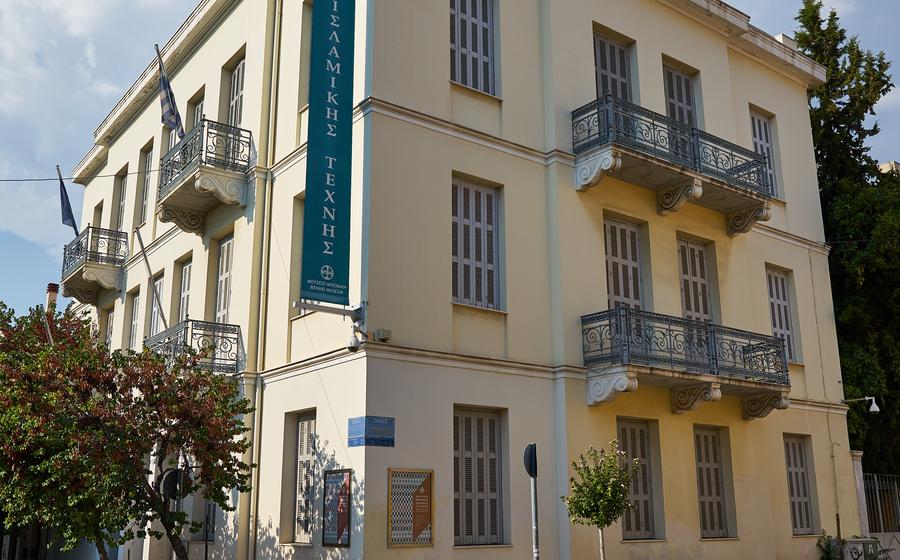
Museum of Islamic Art
- Museum of Islamic Art: A Cultural Gem in Athens
- Exploring the Museum's Collections
- Islamic Art and Calligraphy
- Islamic Ceramics and Pottery
- Textiles and Embroidery:
- Metalwork and Jewelry
- Islamic Architecture
- The Museum's Educational Programs
- Temporary Exhibitions and Events
- Museum Amenities and Accessibility
- Historical Context of the Islamic Presence in Greece
- The Museum's Contribution to Cultural Dialogue
- The Museum's Impact on Tourism
- Nearby Attractions and Must-Visit Sites
- Insider Tip: Unveiling the Hidden Treasures of Islamic Art in Athens
Museum of Islamic Art: A Cultural Gem in Athens
In the heart of Athens, nestled amidst the bustling streets and ancient ruins, lies a hidden gem that celebrates the rich tapestry of Islamic art and culture: the Museum of Islamic Art. Established in 1932, this remarkable institution stands as a testament to the profound influence of Islamic civilization on Greece's cultural heritage. With its exceptional collection of artifacts spanning centuries and regions, the museum invites visitors on a journey through the vibrant world of Islamic art, offering a glimpse into the diverse expressions of faith, creativity, and craftsmanship that have shaped the Islamic world.
Located in a beautifully restored neoclassical building, the museum is easily accessible by public transportation or on foot. Its elegant architecture, featuring intricate decorative elements and a serene courtyard, provides a fitting backdrop for the treasures within. As you step inside, you are greeted by a world of exquisite artistry and craftsmanship, where each piece tells a story of cultural exchange, innovation, and the enduring legacy of Islamic civilization.
Exploring the Museum's Collections
The Museum of Islamic Art in Athens houses a diverse and awe-inspiring collection of Islamic artifacts, spanning a wide range of periods and regions. Highlights include exquisite manuscripts illuminated with intricate calligraphy, stunning ceramics adorned with vibrant glazes, finely woven textiles showcasing intricate patterns, and gleaming metalwork objects showcasing the mastery of Islamic artisans.
Among the must-see exhibits are the Qur'anic manuscripts, which feature beautiful calligraphy and elaborate illuminations. The ceramic collection boasts glazed pottery, tiles, and intricate ceramic designs, demonstrating the exceptional craftsmanship and artistry of Islamic potters.
Thematic galleries focus on different periods and regions of Islamic art, allowing visitors to explore the evolution and diversity of this rich cultural tradition. Interactive displays and multimedia presentations enhance the visitor experience, providing insights into the techniques, symbolism, and historical context of the artworks.
Islamic Art and Calligraphy
Calligraphy holds a profound significance in Islamic art and culture, transcending its functional role as a means of writing. It is elevated to an art form, embodying spiritual and aesthetic values. The Museum of Islamic Art in Athens proudly showcases an array of exquisite calligraphy examples, including Qur'anic inscriptions and decorative panels. These works exemplify the mastery and artistry of Islamic calligraphers, who transformed the written word into a visual masterpiece.
Visitors can trace the evolution of calligraphy styles over time, appreciating the nuances and variations that emerged across different regions of the Islamic world. Workshops and demonstrations conducted at the museum provide an opportunity to witness firsthand the art of Islamic calligraphy, gaining insights into the techniques, tools, and materials employed by these skilled artisans. These interactive sessions offer a deeper understanding of the cultural and artistic significance of Islamic calligraphy.
Islamic Ceramics and Pottery
The Islamic world boasts a rich tradition of ceramic production, renowned for its exquisite craftsmanship and innovative techniques. The Museum of Islamic Art in Athens houses a remarkable collection of Islamic ceramics and pottery, showcasing the diverse styles and techniques that flourished throughout the Islamic world.
Among the highlights of the collection are glazed pottery pieces from the 9th to 13th centuries, featuring intricate geometric and floral designs. Visitors can admire the vibrant colors and patterns of these ceramics, which often depicted scenes from everyday life, nature, or Islamic mythology.
The museum also displays a variety of tiles, which played a significant role in Islamic architecture. These tiles were often used to decorate the interiors and exteriors of buildings, creating stunning mosaics and patterns. The collection includes tiles from various periods and regions, showcasing the evolution of Islamic tile-making techniques.
One of the most impressive pieces in the pottery collection is a large ceramic water filter from the 14th century. This intricate vessel features a series of interconnected chambers and spouts, demonstrating the ingenuity and technical skill of Islamic potters.
The influence of Islamic ceramics and pottery extended far beyond the Islamic world, impacting European and global pottery traditions. The museum's collection provides a glimpse into the cross-cultural exchanges and artistic influences that shaped the history of ceramics.
Textiles and Embroidery:
The Museum of Islamic Art in Athens boasts a remarkable collection of Islamic textiles and embroidery, showcasing the vibrant and diverse textile traditions of the Islamic world. From exquisitely woven fabrics to intricate embroidered garments, these textiles offer a glimpse into the artistic prowess and cultural significance of Islamic craftsmanship.
Traditional motifs, patterns, and symbolism adorn these textiles, reflecting the rich cultural heritage of various Islamic regions. Visitors can marvel at the intricate geometric designs, floral patterns, and calligraphic inscriptions that embellish these fabrics, each telling a unique story of Islamic art and culture.
The museum's collection includes a wide range of textiles, from luxurious silks and velvets to finely woven cottons and linens. These fabrics were often used to create garments, household items, and decorative accessories, showcasing the versatility and artistry of Islamic textile production.
The embroidery on display at the museum is particularly noteworthy, demonstrating the exceptional skills and patience of Islamic embroiderers. Intricate patterns and motifs, often featuring metallic threads and colorful beads, adorn garments, cushions, and wall hangings, creating a dazzling display of color and texture.
The textiles and embroidery collection at the Museum of Islamic Art in Athens offers visitors a unique opportunity to appreciate the beauty and diversity of Islamic textile traditions. These exquisite creations not only showcase the artistic achievements of Islamic artisans but also provide a glimpse into the cultural and social life of the Islamic world.
Metalwork and Jewelry
The mastery of metalworking techniques in Islamic art is evident in the intricate objects on display at the Museum of Islamic Art. Lamps, jewelry, and decorative items showcase the skill and artistry of Islamic metalworkers. Gold, silver, and bronze are among the precious metals used to create these exquisite works of art.
Islamic metalwork is characterized by its intricate designs and patterns. Geometric motifs, calligraphy, and vegetal patterns are commonly used, often combined to create visually stunning objects. The techniques employed by Islamic metalworkers include casting, hammering, engraving, and inlaying.
The influence of Islamic metalwork on European craftsmanship is significant. Techniques and designs developed by Islamic metalworkers were adopted by European artisans, leading to the development of new styles and traditions in metalworking.
Examples of Islamic metalwork on display at the Museum of Islamic Art include:
- A 13th-century brass lamp with intricate geometric patterns and Kufic inscriptions.
- A 16th-century silver ewer decorated with floral motifs and calligraphy.
- A 19th-century gold necklace with filigree work and precious stones.
Islamic Architecture
The Museum of Islamic Art in Athens is a testament to the fusion of Islamic and Byzantine architectural styles. Islamic architecture, characterized by its intricate geometry, symmetry, and the use of arches and domes, is prominently featured throughout the museum's design. The building itself is a harmonious blend of Islamic and Byzantine elements, reflecting the rich cultural heritage of the region.
Visitors can admire the graceful arches, intricate tilework, and decorative motifs that adorn the museum's facade and interiors. The museum's courtyard, with its central fountain and surrounding arcades, is a particularly striking example of Islamic architectural design. The use of natural light, achieved through strategically placed windows and skylights, creates a serene and contemplative atmosphere within the museum.
The fusion of Islamic and Byzantine architectural styles is evident in the museum's layout and organization. The building is arranged around a central courtyard, which is a common feature in Islamic architecture. The use of arches and domes, both prominent elements in Islamic architecture, adds a sense of spaciousness and grandeur to the museum's interiors.
The Museum of Islamic Art is a remarkable example of how Islamic architecture has influenced and enriched the architectural landscape of Greece. The museum's design showcases the beauty and elegance of Islamic architecture, while also highlighting its harmonious coexistence with other architectural styles.
The Museum's Educational Programs
The Museum of Islamic Art in Athens recognizes the importance of education and outreach in promoting understanding and appreciation of Islamic art and culture. To this end, the museum offers a variety of educational programs and activities designed to engage and inform visitors of all ages.
Guided Tours: The museum offers guided tours led by knowledgeable and experienced docents who provide insights into the museum's collection, the history of Islamic art, and the significance of various artifacts. Tours are available in multiple languages and can be tailored to suit the interests and needs of different groups.
Workshops and Lectures: The museum regularly hosts workshops and lectures on a wide range of topics related to Islamic art and culture. These events offer opportunities for participants to learn about specific aspects of Islamic art, such as calligraphy, ceramics, textiles, or architecture, from experts in the field.
Programs for School Groups: The museum welcomes school groups and offers educational programs designed to align with school curricula. These programs include guided tours, interactive activities, and hands-on workshops that help students engage with the museum's collection and learn about Islamic art and history in a fun and engaging way.
Outreach Initiatives: The museum actively engages in outreach initiatives to promote cross-cultural understanding and dialogue. These initiatives include collaborations with educational institutions, community organizations, and cultural institutions to develop educational resources, host events, and foster dialogue about Islamic art and culture.
Temporary Exhibitions and Events
The Museum of Islamic Art in Athens frequently hosts temporary exhibitions and special events that showcase specific aspects of Islamic art or collaborations with other institutions. These exhibitions often focus on particular themes, periods, or regions of Islamic culture, providing visitors with an in-depth exploration of various artistic expressions. The museum also organizes cultural events, performances, and workshops related to Islamic art and culture, offering visitors a dynamic and immersive experience.
To stay updated on upcoming events, visitors can check the museum's website or social media pages. Announcements and updates are regularly posted to inform visitors about upcoming exhibitions, lectures, workshops, and special events. Attending these events is a great way to delve deeper into the diverse world of Islamic art, gain insights from experts and scholars, and engage with the museum's vibrant community of art enthusiasts.
Museum Amenities and Accessibility
The Museum of Islamic Art is committed to providing a welcoming and accessible experience for all visitors. Accessibility features include ramps, elevators, and wheelchair-accessible restrooms, ensuring that everyone can explore the museum's collections comfortably.
For a convenient and enriching visit, the museum offers a range of amenities to enhance the visitor experience. The café provides a relaxing space to enjoy refreshments and light meals while contemplating the museum's exhibits. A well-stocked gift shop offers a variety of souvenirs, books, and unique items inspired by Islamic art and culture.
The museum also houses a specialized research library, open to scholars, students, and the general public. This valuable resource contains an extensive collection of books, journals, and manuscripts related to Islamic art, history, and culture, providing a wealth of information for researchers and enthusiasts alike.
Admission to the Museum of Islamic Art is free of charge, making it accessible to all visitors. Guided tours are available in multiple languages, providing in-depth insights into the museum's collections and the significance of Islamic art. Visitors can check the museum's website or inquire at the information desk for tour schedules and availability.
Historical Context of the Islamic Presence in Greece
The Museum of Islamic Art in Athens stands as a testament to the rich history of Islamic influence in Greece. During the Ottoman period, which lasted from the 15th to the 19th centuries, Greece fell under the rule of the Ottoman Empire. This era witnessed a significant cultural exchange between the Islamic world and Greece, leaving an indelible mark on the country's architecture, art, and cultural heritage.
The Ottomans brought with them their architectural styles, which blended with Byzantine influences to create a unique hybrid style. This fusion can be seen in many buildings in Greece, including mosques, bathhouses, and public fountains. The Ottomans also introduced new artistic techniques and motifs, which were adopted by Greek artisans and incorporated into their own works.
The legacy of Islamic rule in Greece can still be seen today in various aspects of Greek culture. The country's cuisine, music, and language all bear the imprint of Islamic influence. The Museum of Islamic Art serves as a reminder of this shared history and the enduring impact of Islamic culture on Greece.
The Museum's Contribution to Cultural Dialogue
The Museum of Islamic Art in Athens plays a pivotal role in promoting understanding and dialogue between different cultures. As a cultural institution, it transcends geographic and religious boundaries, fostering cross-cultural exchange and collaboration. Through its diverse collection and educational programs, the museum aims to break down stereotypes and promote mutual respect among visitors.
The museum's initiatives focus on creating a platform for cultural exchange, showcasing the shared heritage and influences between Islamic and Western civilizations. It hosts workshops, lectures, and events that bring together scholars, artists, and enthusiasts from various backgrounds to engage in meaningful dialogue and share knowledge.
By promoting cultural understanding, the museum contributes to building bridges between communities and fostering a spirit of inclusivity. It encourages visitors to appreciate the richness and diversity of Islamic art and culture, challenging preconceptions and promoting a deeper understanding of the Muslim world's contributions to global civilization.
The Museum's Impact on Tourism
The Museum of Islamic Art in Athens has significantly contributed to the city's cultural tourism. By showcasing the rich heritage of Islamic art and culture, the museum has attracted visitors from around the world who are eager to learn about and appreciate this diverse and vibrant tradition. The museum's collection of artifacts, exhibitions, and educational programs have helped raise awareness and understanding of Islamic art among a global audience.
Moreover, the museum's presence in Athens has helped to promote cultural diversity and encourage dialogue between different cultures. Through its exhibitions and events, the museum provides a platform for cultural exchange and collaboration, fostering mutual respect and understanding. By highlighting the contributions of Islamic art to global civilization, the museum challenges stereotypes and encourages visitors to engage with the Islamic world in a new and meaningful way.
As a result, the Museum of Islamic Art has become a must-visit destination for tourists interested in exploring Athens' rich cultural heritage. Its unique collection and educational initiatives have made it a valuable asset to the city's tourism industry, attracting visitors who are keen to delve deeper into the fascinating world of Islamic art and culture.
Nearby Attractions and Must-Visit Sites
Discover the Treasures of Ancient Athens
After immersing yourself in Islamic art, delve into the rich tapestry of ancient Greek history and culture. Just a stone's throw from the Museum of Islamic Art, you'll find yourself in the heart of Athens, surrounded by iconic landmarks that have stood the test of time.
Stroll along the ancient streets and marvel at the grandeur of the Acropolis, a UNESCO World Heritage Site that crowns the city. Ascend to the summit to witness the architectural masterpieces of the Parthenon, the Erechtheion, and the Temple of Athena Nike. These awe-inspiring structures, dating back to the 5th century BC, embody the genius and artistry of ancient Greek civilization.
Venture further into the city to explore the Ancient Agora, the bustling marketplace and civic center of ancient Athens. Here, you can wander among the ruins of temples, stoas, and government buildings, transporting yourself back to the vibrant days of Athenian democracy.
Don't miss the National Archaeological Museum, a treasure trove of ancient Greek artifacts. Marvel at the exquisite sculptures, pottery, jewelry, and frescoes that narrate the story of Greek civilization from its prehistoric origins to the Hellenistic period.
Explore Athens' Diverse Cultural Scene
Beyond its ancient wonders, Athens offers a vibrant contemporary cultural scene. Take advantage of the city's many theaters, concert halls, and art galleries to catch a performance, listen to live music, or admire modern and contemporary artworks.
Indulge in the flavors of Greek cuisine at one of the city's many tavernas or restaurants, savoring traditional dishes like moussaka, souvlaki, and baklava. Experience the lively atmosphere of the city's markets, where you can haggle for souvenirs and local delicacies.
Create a Comprehensive Itinerary
To make the most of your visit to Athens, plan a comprehensive itinerary that allows you to explore both its ancient and Islamic heritage. Allocate ample time to wander through the Museum of Islamic Art, absorbing the beauty and diversity of its collections.
Combine your visit with a morning or afternoon exploring the Acropolis and the Ancient Agora, followed by a leisurely stroll through the National Archaeological Museum. In the evening, immerse yourself in Athens' vibrant cultural scene by attending a performance or enjoying a delicious meal at a traditional Greek tavern.
With its rich tapestry of Islamic and ancient Greek history, Athens offers an unforgettable journey through time and culture. Embrace the city's unique blend of heritage and modernity to create a truly fulfilling and enriching travel experience.
Insider Tip: Unveiling the Hidden Treasures of Islamic Art in Athens
Beyond the main exhibits, the Museum of Islamic Art in Athens holds hidden gems that often go unnoticed by visitors. One such treasure is the Sadberk Hanim Museum, a private collection donated to the museum and housed on its premises. This hidden gem showcases an eclectic array of Islamic art and artifacts from across the centuries, including rare manuscripts, intricate metalwork, and exquisite textiles.
Another insider tip is to explore the museum's Calligraphy Gallery, which houses a remarkable collection of Islamic calligraphy. Visitors can admire the intricate script and beautiful ornamentation that adorn manuscripts, panels, and other objects, gaining a deeper understanding of the significance of calligraphy in Islamic art.
